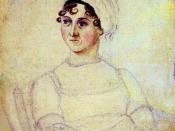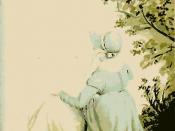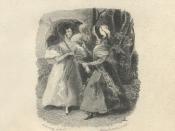The theme of love and marriage has always been popular in literature. In fact, some of the greatest written works in history, such as Shakespeare's Romeo and Juliet and Charlotte Bronte's Jane Eyre, have within them themes of love and themes of marriage. This theme is so fashionable that in modern America, and the modern world for that matter, bookshelves are overrun with love and romance novels. However, with the growth of the theme of love and marriage in literature comes the expansion of the theme. In its expansion, authors have come to use it in a negative manner, analyzing marriages in which love is completely absent, and is replaced quite disgustingly by the desire for social mobility and economic security. Works by such authors as Tracy Chevalier and Jane Austen are perfect examples of novels that display this expansion of the theme of love and marriage. Hence, in Tracy Chevalier's Girl with a Pearl Earring and Jane Austen's Pride and Prejudice, it is quite obvious that there exists underneath roughly each marriage, a socio-economic basis for the marriage's existence.
The marriage of Griet and Pieter in Chevalier's "Girl with a Pearl Earring" illustrates rather harshly how wealth and social status can greatly overpower love in terms of necessity in a literary work. Although it is Griet and Pieter who marry, the love that exists in the novel is only between Griet and Vermeer. This love is never directly mentioned by Chevalier, but it is quite obvious to the readers. Griet frequently defends Vermeer's works of art against her parents' somewhat sharp judgment of them, which proves her secret passion for the artist. Even so, fate would have its way with the love shared between the two, as Griet is a mere child and a servant as well, which...


